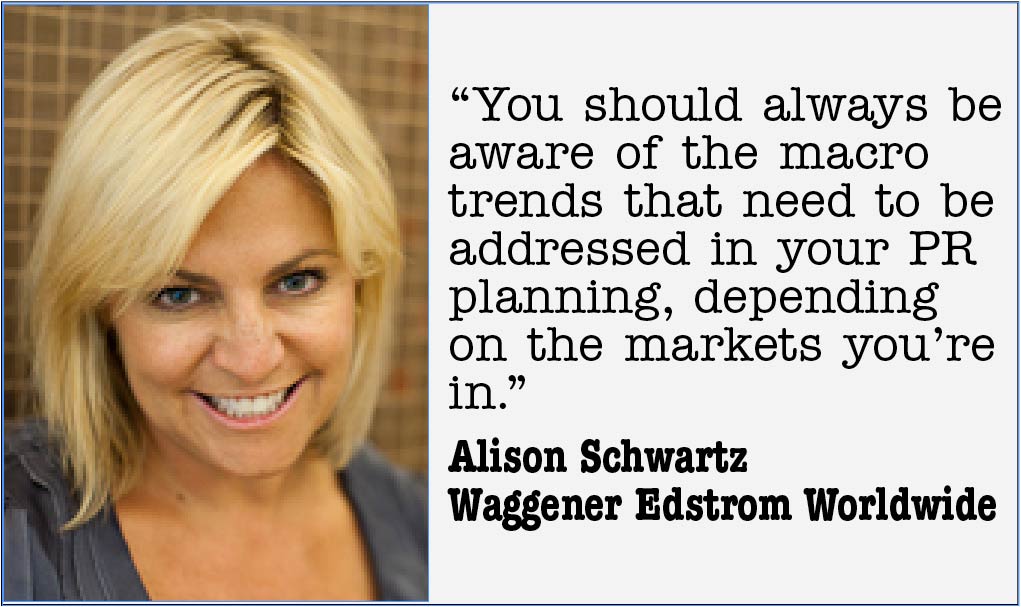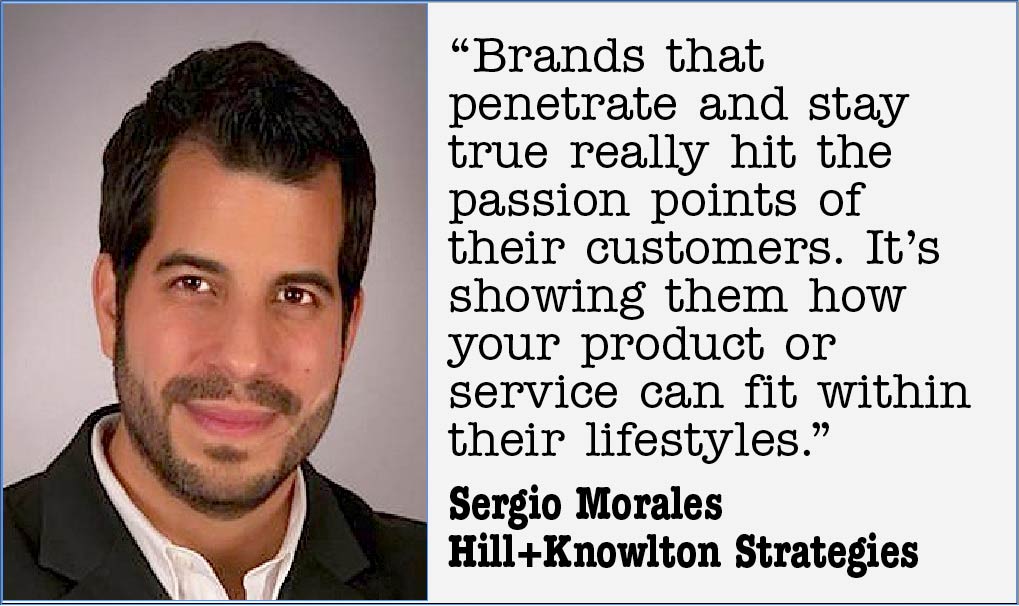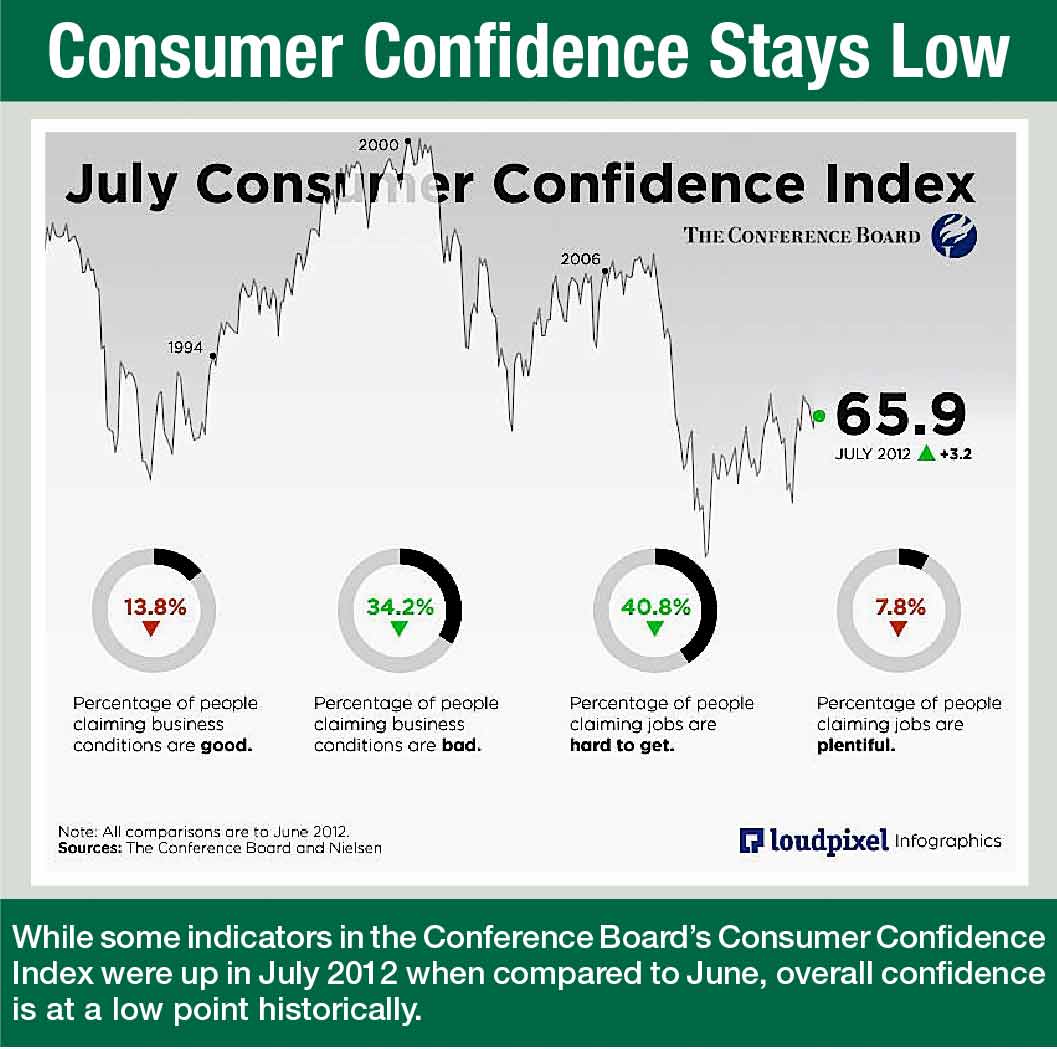Just when we think it’s safe to open the purse strings ever so slightly, bad economic news seems to strike. On July 31, The Wall Street Journal reported that slowing economies worldwide, a recession in much of Europe and wary consumers might just bring an end to at least 10 consecutive quarters of profit growth for America’s biggest companies. While before there was optimism, forecasts are turning negative, stated the article.
On the same day, The Conference Board released its Consumer Confidence Index for July 2012 which, on a positive note, had increased slightly since June. However, while consumers expressed greater optimism about short-term business and employment prospects, they have grown more pessimistic about their earnings, says Lynn Franco, director of economic indicators, The Conference Board. “Given the current economic environment —in particular, the weak labor market—consumer confidence is not likely to gain any significant momentum in the coming months,” she says.
That’s bad news for U.S. corporations, and for their PR and marketing departments. How do they approach what could be another dip in the economy, and consumers who are unwilling to open their wallets?
By not holding back, says Gene Grabowski, executive VP at Levick Strategic Communications. “During tough times, invest more in PR and marketing, not less,” says Grabowski, who has some additional advice for communicators navigating tough times:
• Make PR your lead communications activity. “The messaging sneaks under the buyer’s radar more effectively than advertising, says Grabowski. Plus, PR gives more bang for your buck, dollar for dollar.
• Focus more on promoting products and services over corporate communications. In bad times the tendency is to focus on investor relations and what the CEO wants, says Grabowski. “Adjust to about three-quarters products and services and the rest corporate communications,” he says.
• Take a good hard look at your Web presence. “Make sure that it’s pulling people in, because it’s the picture window into your business,” says Grabowski.
TAKE A STEP BACK
 |
And make no mistake, consumer confidence and the state of the economy are topics of discussion with clients, says Alison Schwartz, senior VP, North American Consumer Practice at Waggener Edstrom Worldwide. “You should always be aware of the macro trends that need to be addressed in your PR planning,” says Schwartz. For example, a luxury brand should be most interested in consumer confidence levels—a B2B not so much.
In any event, the most important strategic move a brand can make in uncertain times is maintaining an ongoing, authentic dialogue with customers, says Schwartz. “Brands that have deeper customer relationships are able to overcome low consumer confidence,” she says.
To Mike Hatcliffe, head of Ogilvy PR’s North America corporate practice, addressing jittery consumers requires a step back. “Look at your brand promise,” says Hatcliffe. “What is your true corporate character, and how authentic is it?”
 |
Authenticity is also high on the list for Sergio Morales, head of N.Y. consumer marketing at Hill+Knowlton Strategies. Be authentic, relevant and consistent, says Morales, who adds that while consumers may be spending a little less, nobody is putting their wallets away entirely. “Brands that penetrate and stay true really hit the passion points of their customers,” says Morales. “It’s showing them how your product or service can fit within their lifestyles.”
And on a parallel track, Hatcliffe says it’s critical that brands know how stakeholders see them, which can only be accomplished through research. “You can’t base any messaging on what you think you know,” he says. “Research will tell you what you need to know.”
BRANDS THAT GET IT
What brands are doing the best job of remaining bulletproof in tough times? Morales cites Red Bull as a brand to study. “They are not tailoring any messages toward a bad economy,” says Morales. “They are most concerned with building authentic relationships with consumers.”
Hatcliffe names IBM and DuPont (both Ogilvy clients) as two brands whose solid reputations will withstand a down economy. “IBM’s Smarter Planet campaign does a great job of enhancing the company’s reputation on a big idea,” says Hatcliffe. In fact, Smarter Planet addresses being smarter in “turbulent times.”
 |
TO TAILOR, OR NOT
Which begs the question: Should communicators tackle turbulent times head-on in their messaging? Morales contends that’s more of a job for advertising. But there could be situations, like price decreases, in which PR could help.
Grabowski, however, advises not to go there. “People know it’s tough, and you’d just be just reinforcing their instincts not to open their wallets,” he says. The job of effective PR and marketing in a recession is to open the minds and reinforce the idea that buying your products is a good investment, he says. In addition, you don’t want to give the impression that you’re desperate for business. “There’s a difference between hard times and desperate times,” says Grabowski. “You want to respond to a downturn but not resort to desperate measures.”
That means sticking to messages that show some empathy for your customers and acting accordingly, says Schwartz. “Wrap more value into your offerings,” she says. “Offer extra features, be a little looser with customer service policies to deepen the trust of customers.” Then, says Schwartz, customers will be inclined to open up their wallets more fully when the economy improves. Sounds like an economically sound strategy.
CONTACT:
Gene Grabowski, [email protected]; Alison Schwartz, [email protected]; Sergio Morales, [email protected]; Mike Hatcliffe, [email protected].
Follow Scott Van Camp: @svancamp01
